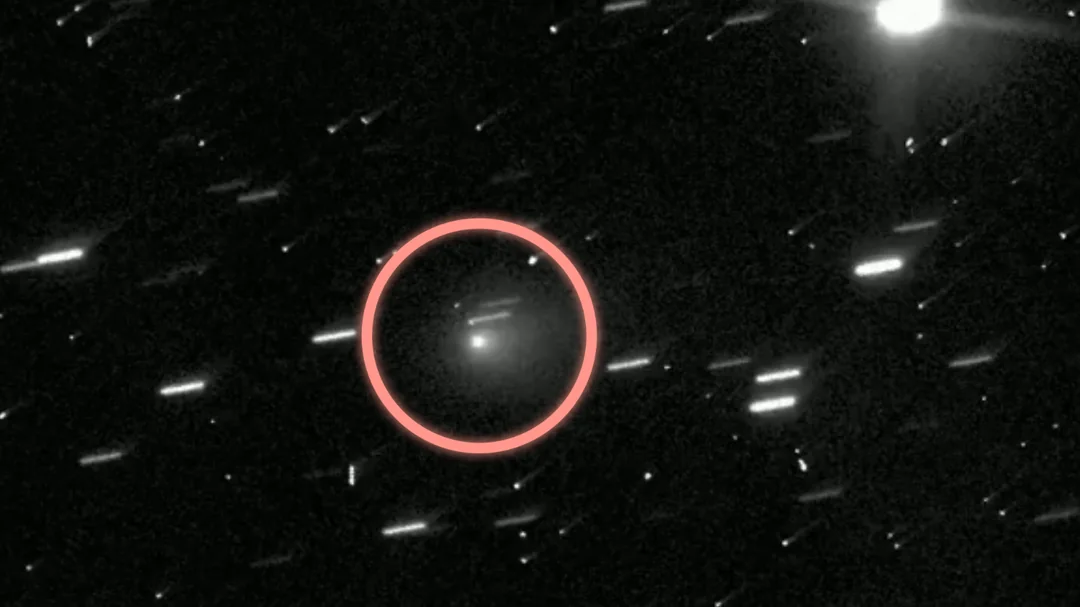
when Horror Yearbook – 3I/ATLAS has become one of the most talked-about interstellar objects in recent history. Discovered in July 2025, this mysterious comet has captured the attention of scientists and space enthusiasts alike. As it races toward the sun, theories and speculations continue to swirl around its true nature. While most experts believe it to be a natural cosmic visitor, others, including a Harvard astronomer, have suggested that 3I/ATLAS could be something far more extraordinary. The comet’s unusual chemical activity and peculiar trajectory have raised scientific questions and fueled online debates about its possible origins. With its closest approach to the sun occurring on October 29, astronomers are racing to collect as much data as possible. This rare opportunity might offer new insights into the formation of interstellar objects and how they interact with our solar system.
The growing intrigue surrounding 3I/ATLAS can largely be credited to Harvard scientist Avi Loeb, who has become a prominent figure in discussions about potential alien technology. Loeb proposed that the object might not be a regular comet but rather an artificially crafted probe designed to observe the solar system. His theory, which gained massive attention online, suggests a 30 to 40 percent chance that 3I/ATLAS is an alien spacecraft. He explained that its timing near the sun could allow for acceleration or deceleration using gravitational assistance, similar to how a spacecraft might maneuver. This concept reignited debates that began years earlier when Loeb made similar claims about the object known as Oumuamua. Although no direct evidence has been found to support the theory, the curiosity surrounding 3I/ATLAS continues to grow as scientists explore every detail of its behavior and composition.
While Avi Loeb’s claims have sparked intrigue, scientists working with NASA and other institutions have presented a more grounded perspective. According to recent analyses, 3I/ATLAS exhibits characteristics consistent with natural comets, such as sublimation and dust trails produced as it approaches the sun. Its orbit, velocity, and composition fit within the range expected for an interstellar object. Astronomers have observed that the comet’s chemical patterns differ slightly from known solar system comets, which could provide new insights into the formation of planetary systems beyond our own. Researchers are particularly interested in studying how 3I/ATLAS reacts to solar radiation and what that reveals about its surface materials. These observations might help uncover how interstellar comets preserve ancient cosmic materials that predate the sun itself, offering valuable information about the early universe and the processes that shaped it.
Despite the excitement surrounding the theory that 3I/ATLAS might be an alien probe, the majority of the scientific community remains skeptical. NASA experts have confirmed there is no credible evidence suggesting that the object is anything other than a naturally occurring comet. While the timing and trajectory of 3I/ATLAS may appear unusual, astronomers emphasize that such variations are common among interstellar objects. Observations indicate that the comet poses no threat to Earth and will pass safely at a significant distance in December 2025. Many scientists view Loeb’s claims as speculative, highlighting the importance of relying on observable data rather than conjecture. Still, the hypothesis has brought renewed attention to interstellar research, encouraging more investment in telescopes and detection systems capable of studying similar objects in the future. The scientific process thrives on such debates, even when the more extraordinary explanations lack supporting evidence.
Regardless of whether 3I/ATLAS turns out to be a natural comet or something more mysterious, its discovery represents a milestone in space exploration. It is only the third confirmed interstellar object to enter our solar system, following Oumuamua and 2I/Borisov. Each of these encounters offers a rare glimpse into materials and phenomena from beyond our cosmic neighborhood. As 3I/ATLAS continues its journey, astronomers are using advanced instruments to measure its light spectrum, motion, and composition. The findings could redefine our understanding of how celestial bodies travel between stars. For the public, the fascination with 3I/ATLAS reminds us how vast and unpredictable the universe remains. Whether it is a simple comet or a relic of alien engineering, this interstellar visitor has already succeeded in reigniting humanity’s wonder about what lies beyond our solar system and how much we have yet to discover.
This article is sourced from freep and for more details you can read at horroryearbook
Writer: Sarah Azhari
Editor: Anisa